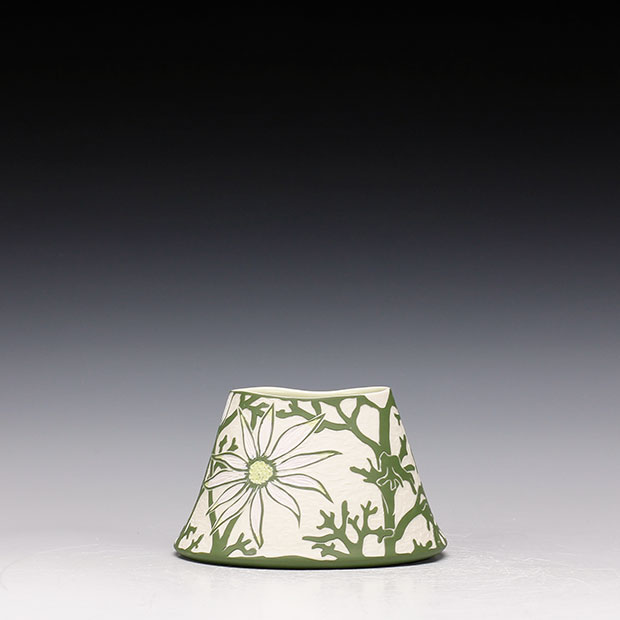Cathy Franzi
CANBERRA, AUSTRALIA
BIOGRAPHY
Cathy is a full-time ceramic artist living and working in Canberra, Australia. She received her BSc from the University of Sydney and a Master of Visual Arts from the Australian National University. In 2015 Cathy was awarded a PhD in practice-led research in Ceramics from the School of Art & Design ANU for her research into ways to express botanical and environmental knowledge through the representation of Australian flora on the ceramic surface.
Her first degree in Science informs her interdisciplinary approach and has led to numerous science - art projects including the prestigious Vice-Chancellor’s Artist Visiting Fellows residency with the Research School of Biology at ANU, the New South Wales Office of Environment and Heritage funded project ‘Art of Threatened Species’ and research opportunities through volunteer work with the National Seed Bank, Canberra.
Cathy’s work is held in numerous Australian public collections including Parliament House Art Collection, Tasmanian Museum & Art Gallery and Shepparton Art Museum. She has received many awards, grants and prizes and most recently received Highly Commended in the international 2020 Waterhouse Natural Science Art Prize at the South Australian Museum.
She currently teaches part time at the Canberra Potters Society and was President of the peak national organization for ceramic makers, The Australian Ceramics Association from 2017 – 2021.
STATEMENT
I love the Australian environment, its rugged landscape, and its unique plants. Through my equal love of working with clay, I explore ways to express the natural world through form, texture, surface imagery and color. The first step in my process is to spend time walking, observing and identifying plants out in the field in a specific place or ecosystem. My ideas develop in the studio as I experiment with technique and materials to capture my experience. Scientific integrity is important to my work, prompting further research in online databases, natural history collections and botanical resources to build an understanding of a site’s environmental history.
 $220
$220
 $220
$220